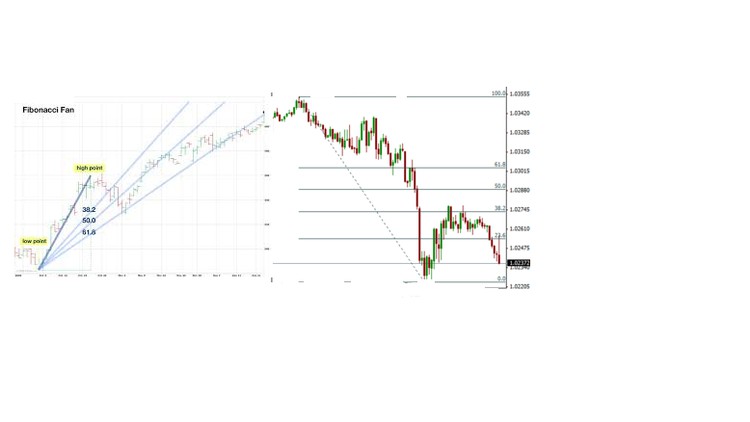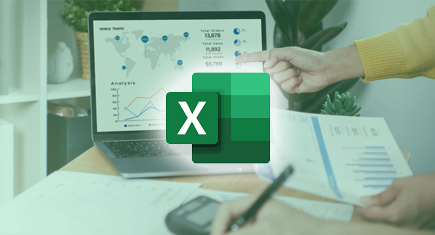Begin your investment journey with confidence using this beginner-friendly guide to creating a robust investment portfolio.
Introduction
Starting your investment journey can be both thrilling and daunting, particularly if you’re new to personal finance. Building a strong investment portfolio is crucial for achieving long-term financial success and ensuring your future stability. By beginning early and taking a systematic approach, you can steadily increase your knowledge, confidence, and investment assets, laying the groundwork for a prosperous financial future.
In this beginner-friendly guide, we’ll lead you through the essentials of starting your investment journey—from setting financial goals and evaluating your risk tolerance to selecting a brokerage platform and making your initial investments. Following these steps will help you create a well-rounded investment portfolio tailored to your unique needs and objectives. Let’s dive in!

Fibonacci Trading with Technical Analysis
Last Updated: 2023-10-25
Fibonacci , Trendlines, Candlesticks , Fibonacci fan ,Fibonacci Arc , Technical indicators, Stock selection criteria etc
Step 1: Define Your Financial Goals and Investment Objectives
A robust investment strategy starts with a clear grasp of your financial goals and investment objectives. By pinpointing what you aim to achieve, you can customize your investment approach to align with those specific goals. Here’s how to begin:
Short-term vs. long-term goals
Start by distinguishing between your short-term and long-term financial goals. Short-term goals are objectives you aim to accomplish within the next few years, like saving for a down payment on a home or planning a dream vacation. In contrast, long-term goals extend over a longer period, potentially spanning decades, such as saving for retirement or funding your children’s education.
Establishing realistic expectations
When setting your financial goals, it’s important to be realistic about potential returns and timeframes. Take into account factors such as your current financial situation, income, and existing savings. Keep in mind that all investments carry inherent risks, and specific returns are never guaranteed. By establishing realistic expectations, you can make informed decisions and avoid being discouraged by market fluctuations or short-term setbacks.
Once you’ve clarified your financial goals and investment objectives, you’ll have a clear roadmap for your investment journey. Remember that your goals may evolve over time, so it’s crucial to regularly review and adjust them to ensure they stay aligned with your changing needs and circumstances.
Step 2: Assess Your Risk Tolerance
Assessing your risk tolerance is essential for constructing an investment portfolio that matches both your financial goals and personal comfort level. Risk tolerance is defined by your capacity and willingness to endure potential losses in the quest for greater returns. Here’s how to evaluate your risk tolerance:
Understanding the relationship between risk and reward
In investing, there is a basic trade-off between risk and reward. Typically, investments with higher potential returns involve greater risks, whereas lower-risk investments generally provide more modest returns. Finding the right balance between risk and reward is crucial for building a portfolio that aligns with your financial goals while keeping potential losses within your comfort zone.
Factors that influence risk tolerance
Several factors can impact your risk tolerance, including:
- Time Horizon: The duration you plan to invest affects your risk tolerance. With a longer time horizon, you may be more inclined to take on higher-risk investments, as you have more time to recover from any potential losses.
- Financial Goals: Your specific financial objectives can shape your risk tolerance. For example, if you’re investing for a distant retirement, you might be more open to higher risks for potentially greater returns.
- Financial Stability: Your current financial situation, such as job security and existing savings, influences your risk tolerance. A stable income and a well-stocked emergency fund may make you more comfortable with higher-risk investments.
- Emotional Factors: Your personal disposition and emotional responses also play a role in risk tolerance. While some individuals are naturally more risk-averse, others may be more comfortable with higher levels of risk.
By evaluating your risk tolerance, you can make more informed investment choices and build a portfolio that aligns with both your comfort level and financial goals. It’s important to regularly reassess your risk tolerance as your circumstances and objectives change over time.
Step 3: Create a Budget and Determine Your Investment Amount
Before you begin investing, it’s crucial to have a clear grasp of your financial situation and establish a budget that considers your income, expenses, and savings goals. This will enable you to determine how much you can afford to invest while keeping your finances balanced. Here’s how to create a budget and figure out your investment amount:
Tracking income and expenses
Start by monitoring your monthly income and expenses to gain a clear understanding of your financial situation. Divide your expenses into essential and discretionary categories. Essential expenses encompass items like rent or mortgage, utilities, groceries, and insurance, whereas discretionary expenses cover costs such as dining out, entertainment, and vacations.
Deciding how much to invest
Once you have a clear picture of your income and expenses, you can determine how much money to allocate towards investments. Consider the following factors when deciding on your investment amount:
- Savings Goals: Ensure you’re setting aside sufficient funds for both short-term and long-term savings objectives, such as building an emergency fund and saving for major purchases or life events.
- Debt Repayment: Prioritize paying off high-interest debt before committing substantial amounts to investments, as the interest on debt often outweighs potential investment returns.
- Discretionary Spending: Review your discretionary spending and identify areas where you can reduce expenses to free up funds for investing.
- Regular Contributions: Aim for consistent investment, whether through a lump sum or automatic monthly contributions. Regular investments can help you benefit from dollar-cost averaging and mitigate the effects of market fluctuations.
By creating a budget and determining your investment amount, you’ll be better positioned to develop a well-balanced investment portfolio that aligns with your financial goals and circumstances. Be sure to periodically review and adjust your budget as your financial situation and goals evolve.
Step 4: Establish an Emergency Fund
Before starting to invest, it’s essential to create an emergency fund to act as a financial safety net for unexpected expenses or income loss. A strong emergency fund can prevent you from tapping into your investments during financial difficulties, ensuring that your portfolio can continue to grow without disruption. Here’s how to build an emergency fund:
Importance of having a financial safety net
An emergency fund offers protection against unforeseen expenses like medical bills, car repairs, or job loss. With this safety net established, you can reduce the need to rely on high-interest debt or withdraw from your investments, helping you stay on track with your long-term financial goals.
Tips for building an emergency fund
- Set a Target Amount: Financial experts typically advise saving three to six months’ worth of living expenses in your emergency fund. However, you might need more or less depending on your personal situation, job stability, and risk tolerance.
- Prioritize Contributions: Make building your emergency fund a top priority, contributing to it before spending on non-essential items or investing in higher-risk assets.
- Choose a Suitable Account: Store your emergency fund in a separate, easily accessible account, like a high-yield savings account or a money market account. This ensures the funds are available when needed but not too accessible for impulsive spending.
- Automate Contributions: Set up automatic transfers from your checking account to your emergency fund to ensure consistent and effortless saving.
By establishing an emergency fund, you’ll lay a strong financial foundation that allows you to invest with greater confidence and peace of mind. Once your emergency fund is fully established, you can concentrate on building and growing your investment portfolio without worrying about unexpected expenses disrupting your progress.
Step 5: Learn About Different Investment Options
As a new investor, it’s crucial to get acquainted with various investment options to make well-informed decisions when constructing your portfolio. Gaining an understanding of the features, advantages, and risks of different types of investments will help you identify which options align best with your financial goals and risk tolerance. Here’s a brief overview of some common investment choices:
Stocks, bonds, and mutual funds
- Stocks: Buying stocks (also known as equities or shares) means acquiring a small ownership interest in a company. Stocks can offer capital appreciation and, in some cases, dividend income. Although they generally come with higher risk, they have the potential for substantial long-term returns.
- Bonds: Bonds are debt instruments issued by corporations or governments that pay regular interest to investors. They usually carry lower risk and offer lower potential returns compared to stocks. Bonds can provide a steady income stream and help stabilize your investment portfolio.
- Mutual Funds: A mutual fund collects money from various investors to invest in a diversified portfolio of stocks, bonds, or other assets. They provide immediate diversification and professional management, making them a popular choice for beginner investors.
Exchange-traded funds (ETFs) and index funds
- ETFs: Exchange-traded funds function like mutual funds but are traded on an exchange similar to stocks. They usually track a specific market index, such as the S&P 500, providing diversification, low fees, and tax efficiency.
- Index Funds: Index funds are a type of mutual fund or ETF that passively follows a market index. They offer broad market exposure, low costs, and typically lower risk compared to actively managed funds.
Real estate and other alternative investments
- Real Estate: Investing in real estate, whether directly or through real estate investment trusts (REITs), can offer capital appreciation, rental income, and diversification benefits. However, real estate investments often require substantial capital and may involve higher risks and costs compared to other investment options.
- Other Alternatives: Some investors may consider alternative investments like commodities, cryptocurrencies, or art. While these options can provide diversification and unique opportunities, they usually come with higher risks and should be approached with caution, especially by beginner investors.
By familiarizing yourself with different investment options, you’ll be better prepared to choose assets that align with your financial goals, risk tolerance, and overall investment strategy. Continue to enhance your knowledge and stay updated on market trends and new investment opportunities as you advance in your investment journey.
Step 6: Develop an Investment Strategy and Asset Allocation
With a solid grasp of your financial goals, risk tolerance, and the range of investment options available, you’re now prepared to craft an investment strategy and establish your optimal asset allocation. This step is vital for building a well-balanced portfolio that meets your specific needs and objectives. Here’s how to create your investment strategy and determine your asset allocation:
Developing an investment strategy
- Define Your Objectives: Reevaluate your financial goals and ensure your investment strategy aligns with them. Take into account factors such as your time horizon, risk tolerance, and anticipated returns.
- Choose an Investment Approach: Decide whether to adopt a passive or active investment strategy. Passive investing generally involves using low-cost index funds or ETFs to track market indices, while active investing focuses on selecting individual stocks or bonds with the aim of outperforming the market.
- Diversify Across Asset Classes: Diversification is a fundamental investing principle that involves spreading your investments across different asset classes to mitigate risk. By holding a variety of assets, such as stocks, bonds, and others, you can lessen the impact of poor performance in any single category on your overall portfolio.
Determining your asset allocation
- Assess Your Risk Tolerance: Your risk tolerance is crucial in determining the right asset allocation for your investment portfolio. Investors with a higher risk tolerance might allocate a larger share of their portfolio to stocks, whereas those with a lower risk tolerance may prefer a more conservative mix of bonds and cash.
- Consider Your Time Horizon: Your investment time horizon will influence your asset allocation decisions. If you have a longer time horizon, you might be able to take on more risk and allocate a larger portion of your portfolio to equities. Conversely, a shorter time horizon may require a more conservative allocation.
- Rebalance Periodically: Over time, market fluctuations may cause shifts in your portfolio’s asset allocation. Regularly rebalancing your portfolio helps maintain your target allocation and ensures that your investments continue to align with your financial goals and risk tolerance.
By creating a well-considered investment strategy and asset allocation, you’ll be better positioned to build a diversified and balanced portfolio aimed at reaching your financial goals. Keep in mind that as your circumstances and objectives evolve, your investment strategy and asset allocation may require adjustments. Regularly reviewing and updating your approach will help keep your investments aligned with your goals.
Step 7: Choose a Brokerage Platform and Open an Account
After establishing a solid investment strategy and asset allocation, the next step is to select a brokerage platform and open an account. Choosing the right platform will facilitate the execution of your investment plan and the management of your portfolio. Here’s how to select a brokerage platform and set up an account:
Factors to consider when choosing a brokerage platform
- Fees and Commissions: Compare the fee structures of various platforms, including trading commissions, account maintenance fees, and other charges. Lower fees can have a significant impact on your long-term investment returns.
- Investment Options: Verify that the platform offers the types of investments you’re interested in, such as stocks, bonds, mutual funds, ETFs, or other assets.
- Research and Tools: Choose a platform that provides access to research, analysis, and tools to aid in making informed investment decisions.
- Customer Service and Support: Evaluate the quality of customer support, as you may need help with account-related issues or investment advice.
- Ease of Use: Select a platform with a user-friendly interface that simplifies managing your investments.
Opening your first brokerage account
- Choose Your Account Type: Select the account type that best fits your needs, such as an individual, joint, or retirement account.
- Provide Personal Information: To open an account, you’ll need to supply personal details including your name, address, Social Security number, and employment information.
- Verify Your Identity: Brokerage platforms are legally required to verify your identity, which may involve uploading a photo of a government-issued ID or providing additional documentation.
- Fund Your Account: Transfer funds from your bank account to your new brokerage account. This process may take a few days to complete.
- Start Investing: Once your account is funded, you can begin implementing your investment strategy by purchasing the assets you’ve selected for your portfolio.
By carefully selecting a brokerage platform and opening an account, you’ll be ready to embark on your investment journey. Remember to periodically review your investment strategy, asset allocation, and brokerage platform to ensure they continue to meet your needs as you work towards your financial goals.
Step 8: Start Investing and Regularly Monitor Your Portfolio
With your investment strategy, asset allocation, and brokerage account set up, you’re ready to begin your investment journey. Start by purchasing the assets you’ve chosen for your portfolio and commit to regularly monitoring your investments to keep them aligned with your financial goals. Here’s how to get started:
Execute your investment strategy
- Buy Assets: Utilize your brokerage platform to purchase the stocks, bonds, mutual funds, ETFs, or other assets you’ve selected according to your investment strategy and asset allocation. Aim to diversify across various sectors, industries, and geographic regions to mitigate risk.
- Dollar-Cost Averaging: Consider employing a dollar-cost averaging strategy, where you invest a set amount of money at regular intervals, such as monthly or quarterly. This approach can help minimize the effects of market fluctuations and eliminate the need for timing the market.
Regularly monitor your portfolio
- Track Your Investment Performance: Monitor the performance of your investments to evaluate their progress toward your financial goals. Review both the performance of individual assets and the overall portfolio.
- Rebalance as Needed: Market fluctuations can alter your portfolio’s asset allocation over time. Regularly review and rebalance your portfolio to ensure it stays aligned with your desired asset allocation and risk profile. This may involve selling certain assets and buying others to maintain alignment with your strategy.
- Review Your Investment Strategy: As your financial goals, risk tolerance, or personal circumstances evolve, you may need to adjust your investment strategy and asset allocation. Periodically reassess your investment plan to ensure it continues to meet your current needs and objectives.
Stay disciplined and focused on your goals
- Avoid making decisions based on emotions: Market volatility can be unsettling, but it’s crucial to refrain from making hasty investment choices driven by short-term market changes. Maintain discipline and stay committed to your long-term financial objectives.
- Steer clear of trying to time the market: Predicting market fluctuations is notoriously difficult, even for seasoned investors. Instead, adhere to your investment strategy and keep a long-term outlook.
By initiating your investment journey and consistently reviewing your portfolio, you’ll be progressing towards your financial goals. Remember, investing is a marathon, not a sprint. Upholding discipline, patience, and a focus on your long-term objectives will help you navigate market ups and downs and make well-informed decisions along the way.
Step 9: Stay Informed and Continue Learning
As a novice investor, it’s crucial to keep yourself informed and constantly enhance your knowledge to make sound investment choices and adjust to evolving market conditions. Here are some strategies to help you stay updated and keep learning:
Monitor your investments
- Examine your portfolio: Frequently assess your investment portfolio to confirm it aligns with your financial objectives and risk tolerance. This will help you spot any needed adjustments or rebalancing.
- Monitor market news: Stay informed about market updates and developments that could affect your investments, including economic trends, interest rate fluctuations, and company-specific events.
Stay educated about investing
- Explore books and articles: Reading books and articles on investing can offer valuable insights, strategies, and lessons from seasoned investors. Regularly engaging with material on investing and personal finance will broaden your knowledge.
- Follow finance blogs and podcasts: Keep yourself updated by following credible finance blogs, podcasts, or YouTube channels that discuss investing topics, market news, and personal finance advice.
- Enroll in courses or attend webinars: Online courses, webinars, or local workshops can enhance your understanding of investment strategies, asset allocation, and risk management.
Connect with like-minded individuals
- Join investment clubs or online communities: Engaging with like-minded individuals can offer valuable insights, support, and motivation. Investment clubs or online forums provide opportunities to share experiences, ask questions, and learn from the successes and challenges of others.
- Seek advice from seasoned investors: Turn to experienced investors you trust—whether they are family, friends, or colleagues—for guidance. Their knowledge and personal experiences can provide valuable perspectives and insights.
By staying informed and continually expanding your investment knowledge, you’ll be better positioned to navigate the evolving investment landscape and make decisions that align with your financial goals. Remember, investing is a lifelong journey, and the more you learn and experience, the better equipped you’ll be to reach your financial objectives.
Conclusion
Starting your investment journey can be both exciting and demanding. As a beginner, it’s crucial to approach it methodically to establish a strong foundation for your investment portfolio. By setting clear financial goals, understanding your risk tolerance, exploring various investment options, creating an investment strategy, and staying informed, you’ll be better prepared to make well-informed decisions and work towards achieving your financial objectives.
Keep in mind that investing is an ongoing process, and your strategy, asset allocation, and knowledge will likely evolve as your circumstances and goals shift. Remain dedicated to learning and adapting, and you’ll be on the path to financial success. While the journey may have its challenges, with patience, discipline, and a focus on your long-term goals, you can navigate market fluctuations and build a secure financial future.



.jpg)









848 Comments